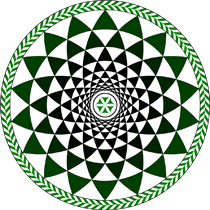Speaker
Mr
Mateusz Reczyński
(Faculty of Chemistry, Jagiellonian University, Kraków)
Description
The [NiII(cyclam)]2+ complex (cyclam = 1,4,8,11-tetraazacyclotetradecane) has been widely employed as a building block in the construction of bimetallic assemblies and afforded several structurally dynamic guest-sensitive CN-bridged molecular magnets [1,2]. This complex can be easily oxidised to the relatively stable [NiIII(cyclam)]3+ unit (s = ½) which we used to construct a new class of molecular magnets. The combination of [NiIII(cyclam)]3+ with diamagnetic [FeII(CN)6]4- leads to the formation of the molecular (H3O)[NiIII(cyclam)][FeII(CN)6]∙5H2O chain. The compound exhibits dehydration-induced reversible charge-transfer in the NiIII-FeII couple, which results in the formation NiII (s = 1) and FeIII (s = ½). The process is reflected in the change of magnetic properties - the increase of the magnetic susceptibility value and appearance of ferromagnetic interactions at low temperatures. This observation prompted us to combine [Ni(cyclam)]3+ with the related hexacyanometallates(II): [RuII(CN)6]4- and [OsII(CN)6]4-. In this way new 1D systems have been obtained: (H3O)[NiIII(cyclam)][MII(CN)6]∙5H2O, where MII = Ru (1) or Os (2). 1 and 2 are isomorphic with the Fe-based analogue and show paramagnetic behaviour because of the separation of the paramagnetic NiIII centres by diamagnetic low-spin RuII and OsII, respectively. After dehydration the increase of the χT value in the high-temperature limit indicates that the charge-transfer process takes place with the formation of paramagnetic RuIII or OsIII (s = ½) and NiII (s = 1). However, in contrast to Ni-Fe analogue, at low temperature a significant decrease of χT is observed, which suggests the presence of antiferromagnetic interactions through the CN bridges. The use of the [NiIII(cyclam)]3+ building block allowed us to construct a new class of charge-transfer-active molecular magnets, based on unusual NiIII/II-RuII/III and NiIII/II-OsII/III redox couples.
[1] B. Nowicka, M. Bałanda, M. Reczyński, A. M. Majcher, M. Kozieł, W. Nitek, W. Łasocha and B. Sieklucka, Dalton Trans., 2013, 42, 2616-2621.
[2] B. Nowicka, M. Reczyński, M. Rams, W. Nitek, M. Kozieł and B. Sieklucka, CrystEngComm, 2015, 17, 3526-3532.
Author
Mr
Mateusz Reczyński
(Faculty of Chemistry, Jagiellonian University, Kraków)
Co-authors
Prof.
Barbara Sieklucka
(Faculty of Chemistry, Jagiellonian University, Kraków)
Dr
Beata Nowicka
(Faculty of Chemistry, Jagiellonian University, Kraków)
Prof.
Christian Näther
(Institut für Anorganische Chemie, Universität Kiel)
Dr
Michal Rams
(Institute of Physics, Jagiellonian University, Kraków)

